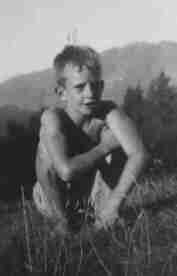It happens that Vincent Ward is one of my favourite film directors – those in the US may remember “The Navigator” (not one of his best) and “Map of the Human Heart”. So, when his latest film turned up in the Auckland Film Festival it was (for me at least) a must-see.
His very first film, “Pahi”, was made when he was 21, over a period of 2 years, and is a documentary. The subject is the surprising thing. Pahi was the last remaining link with Rua Kenana; a Maori prophet of the late 1800’s and early 20th century. That name readers may recall has cropped up in other pieces that I have written and most prominently in the saga (continuing saga) of “The Urewera Eleven”. Pahi was (she died in 1980) married to Rua’s brother.
This latest film, “Rain of the Children”, is another documentary. Narrated by Ward himself, it is presented as a rediscovery and personal pilgramage to the story of “Pahi” the original documentary and to the kuia herself.
I know that it is most unlikely that “Rain of the Children” will be seen outside of the local film festivals, perhaps on very late night local tv if the public broadcaster “charter” lasts more than another six months. That is truly a great pity because Ward has recreated the story of Pahi in some depth and combined that recreation with appropriate cuts from his original documentary to present a self-analysis, and his personal discovery of the truths behind her story that he had missed from his first film.
So, his return to the Maungapohatu, to the mountain, to the river, to the story centres on what was “missed”. As seen in the first documentary, Pahi could come across as verging on “mad”; continually in prayer, physically bent double, undertaking “strange voyages” within her very private world, and caring for her one remaining child now in his 40’s. He was regarded as “patuparaihe” – almost literally “away with the fairies”. A very strange man indeed.
Ward was very much aware that Pahi was a great deal more than he recorded in 1978 and it is the missing history that “Rain of the Children” sets out to disclose. Without covering all of the content of the film, which would require a virtual re-creation of the entire script, he ends with a very graphic illustration.
The end of the film starts with one of the final scenes from “Pahi” – a sequence showing the old lady squatting on the ground cutting firewood. Her son Nicki standing in the background, his back turned to her. Ward describes what he was seeing when he took the original film, and then points out that instead of splitting the piece of wood lengthways, Pahi was ineffectually trying to cut cross-grain. After his re-analysis of her story, Ward now realised what Pahi was doing in that clip.
She knew that he was leaving. She wanted him to leave, as he represented (my words) an invasion of her world. At the same time she was trying to delay that departure for as long as possible (by cutting across the wood and extending the scene) so that her “real world” would not return. That real world comprised her “curse”; all of her 15 children except Nicki had died in infancy or childhood. Her only way of killing that curse was to keep Nicki alive. Because of his “patuparaihe” nature, Nicki also had a curse of his own and that for Pahi was the centre of her nature.
It has taken four days to get this sorted in my head. I would love to see the film again. It scared the h311 out of me for sure, not because it was “frightening” as such but because of the world picture that it presented. It was a story of the culture of the pre-European Maori, existing within the context of my lifetime (remember that Pahi would have been alive and in her 70’s at the time that the family was living in Te Whaiti in the late 1950’s).
Subscribe to:
Post Comments (Atom)

No comments:
Post a Comment